
by Fiona Moore
The Cinderford Palace Cinema is currently holding a Peter Cushing retrospective, celebrating a career that has included roles as diverse as van Helsing, Sherlock Holmes, Winston Smith and an odious Oxford student out to get Stan Laurel and Oliver Hardy (no, really). I’m taking the opportunity to review their double bill of Frankenstein Created Woman (Hammer, 1966) and his most recent movie, The Blood Beast Terror (Tigon, 1968).
Frankenstein Created Woman

Hammer Studios’ take on the Frankenstein franchise differs from the American one in that the focus is not on the monster, but on the man who created it. The monster doesn’t survive beyond the first movie, and the subsequent films, including this one, instead follow the career of Doctor Victor Frankenstein (Peter Cushing) as he continues his experiments in reviving the dead while staying one step ahead of the law.
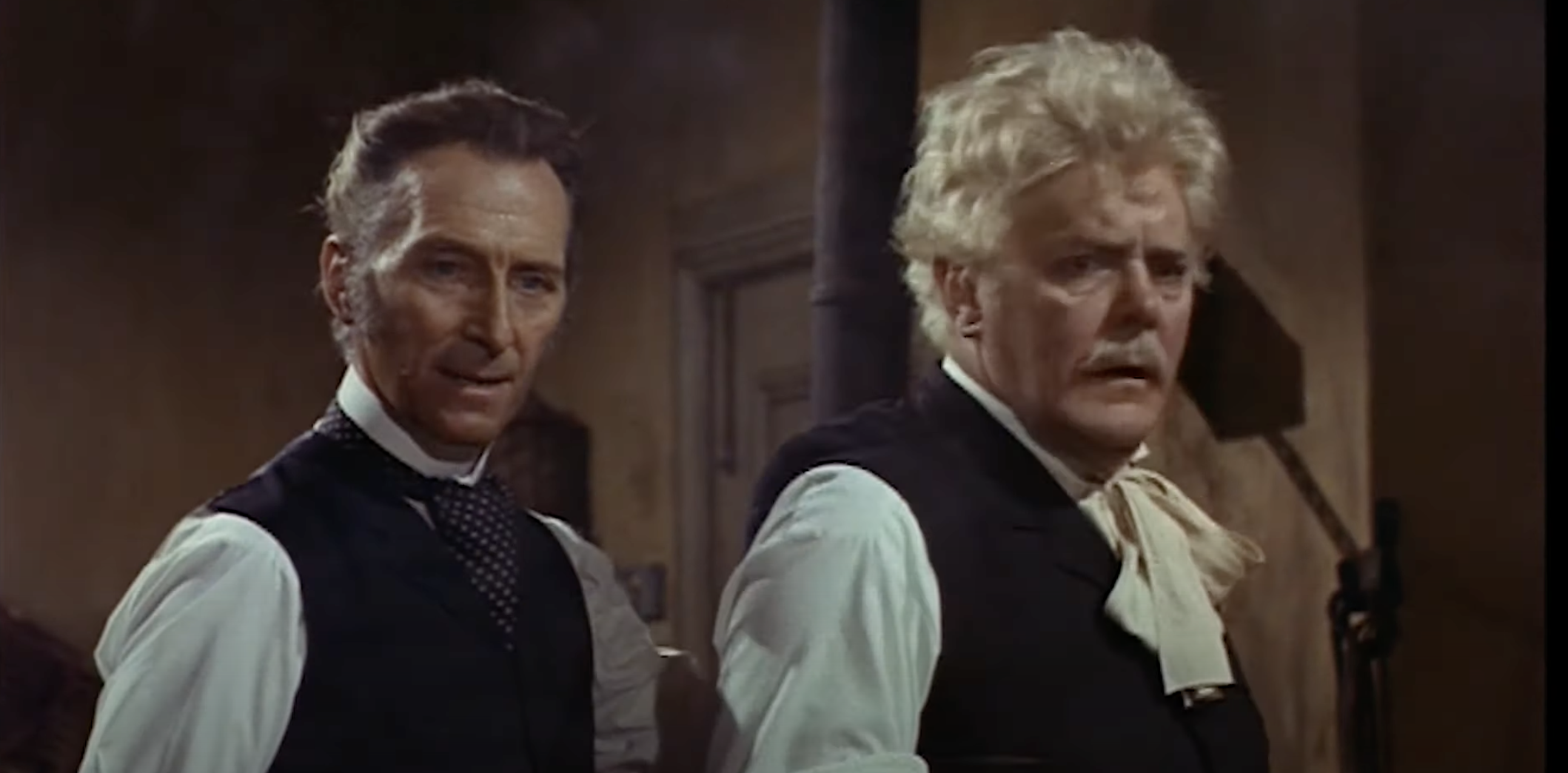
In Frankenstein Created Woman, Frankenstein, aided by local doctor Hertz (Thorley Walters) and Hertz’s assistant Hans (Robert Morris), develops a means of capturing the soul at point of death. When Anton (Peter Blythe), a rich bully, murders the town innkeeper and frames Hans for it, Frankenstein exploits the situation by using the executed Hans’ soul to test his new procedure. The innkeeper’s daughter, Christina (Susan Denberg), who is also Hans’ lover, commits suicide, and Frankenstein, naturally enough, decants Hans’ soul into her body. Christina then goes on a murder spree, killing Anton and his friends, before finally killing herself a second time.
The result is a surprisingly nuanced take on marginalisation and prejudice, particularly as regards women. Both Hans and Christina are shunned by the villagers and bullied by Anton’s clique: Hans because his father was executed for murder (a death Hans himself witnessed as a child) and Christina because she has a prominent scar on her face. However, they find comfort and love with each other. Christina is continually underestimated and belittled by everyone around her: when the murders start, even Frankenstein assumes that it is Hans’ soul working through her body, but the film itself is much more ambiguous, making it clear that Christina is at the very least a willing participant, and possibly the one wholly responsible. At the end of the film, when Frankenstein confronts her and tells her that she is not responsible for the murders, saying “let me tell you who you really are,” Christina responds “I know who I really am.” Without intending it, Frankenstein has empowered her, and, although Frankenstein may think he understands her, he, like everyone in the story, has underestimated and misjudged her.

The direction of the movie is also rather clever: the murders are implied rather than shown, and the director, Terence Fisher (known for other Cushing outings like The Curse of Frankenstein [1957] and Dracula [1958]), throws in little bits of foreshadowing like having the guillotine visible in the background just before Hans is framed for the innkeeper’s death. The villains are believably nasty, reminiscent of the violent young men in the novel A Clockwork Orange. Finally, Cushing gives a brilliant performance as Victor Frankenstein that highlights the character’s charismatic evil, unintentionally corrupting everyone with whom he associates.
Four out of five stars.
The Blood Beast Terror
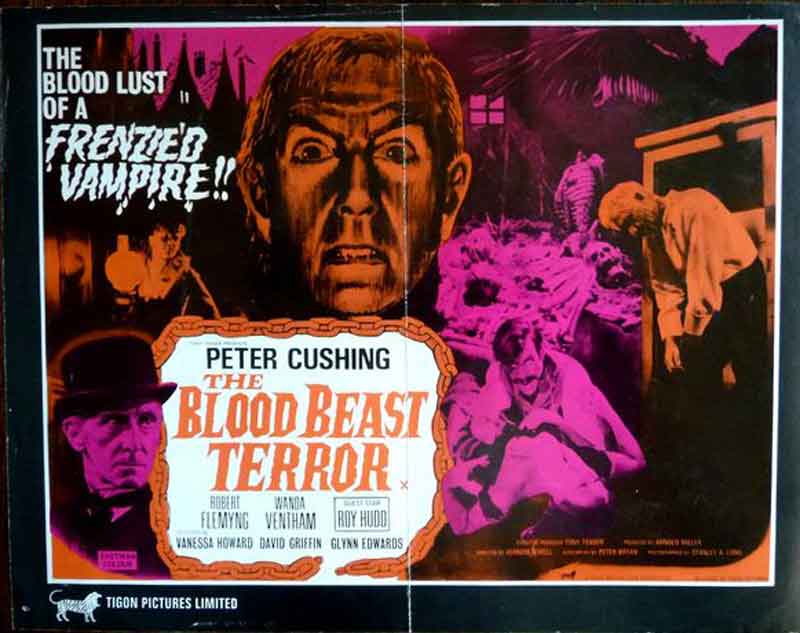
I was particularly interested to see this one as it is the sole film by Tigon British Film Porductions prior to their astounding folk-horror piece Witchfinder General. While it’s ambitious and interesting, The Blood Beast Terror is unfortunately nowhere near Witchfinder General’s league.
The movie’s plot is an attempt to meld no fewer than three horror subgenres: the vampire film, the were-beast film, and, of course, Frankenstein. Cushing plays Quennell, a detective investigating the strange deaths of a series of young men, seemingly mauled by a bird of prey. His investigation leads him to a lepidopterist, Carl Mallinger (Robert Flemyng) with a beautiful daughter, Clare (Wanda Ventham). After a few unconvincing red herrings, it becomes evident that Clare is not Mallinger’s daughter per se, but a monstrous hybrid of a human and a moth, who drinks human blood. She and her creator flee into the countryside, where Mallinger attempts to create a mate for her, but Quennell tracks them down.
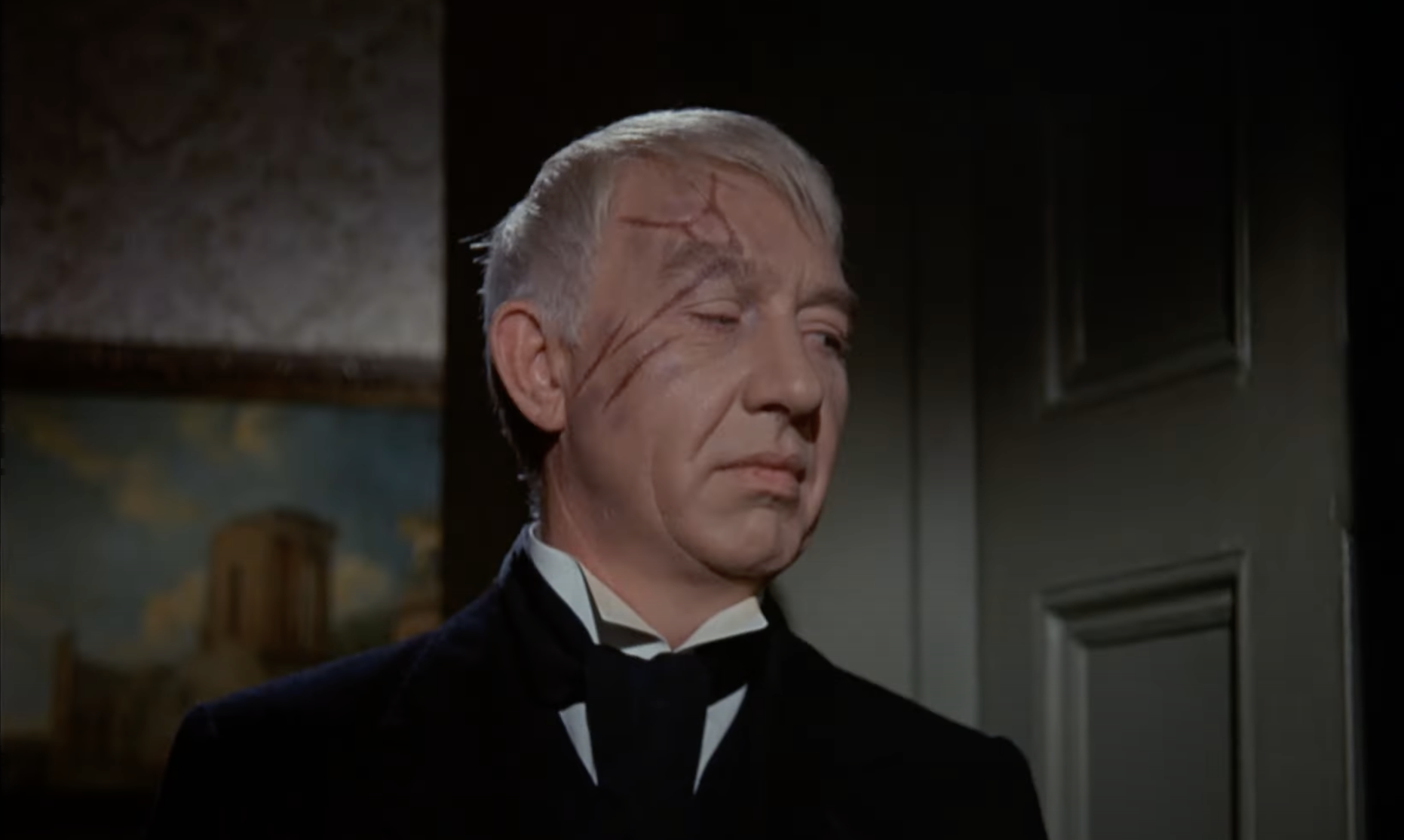
The movie gets points for playing against traditional horror film clichés, though it then loses some for not doing so to a satisfying conclusion. For instance, the movie plays against type by giving us a female vampire who preys on men, and a female Frankenstein’s Monster-figure who desires a mate as much as her male counterpart does. However, it doesn’t really follow through thematically, failing to explore the implications of reversing the gender roles, and, where the Monster’s pathetic need for a companion humanises him, Clare’s desire for a male of her species is dealt with perfunctorily and unsympathetically. The writer also seems uncomfortable with the lack of a female victim, but, rather than exploring the implications of men as victims—or perhaps considering more subtle ways in which Clare might be seen as a victim of society, as with Christina in Frankenstein Created Woman—instead shoehorns in a daughter for Quennell to provide some end-of-movie rescue action.
The movie has a few other problems. There is an unsubtle amateur drama sequence which draws the parallels between Clare and Frankenstein’s Monster, and which could have been half its length. There are some inconsistencies and inexplicable points, e.g. when a young naturalist turns up dead near Mallinger’s house, he denies ever having known the man, when a simple investigation would have showed that he visited him the previous night. The monster is eventually killed in a way that is so obvious I was surprised they chose that path.
Two and a half out of five stars.
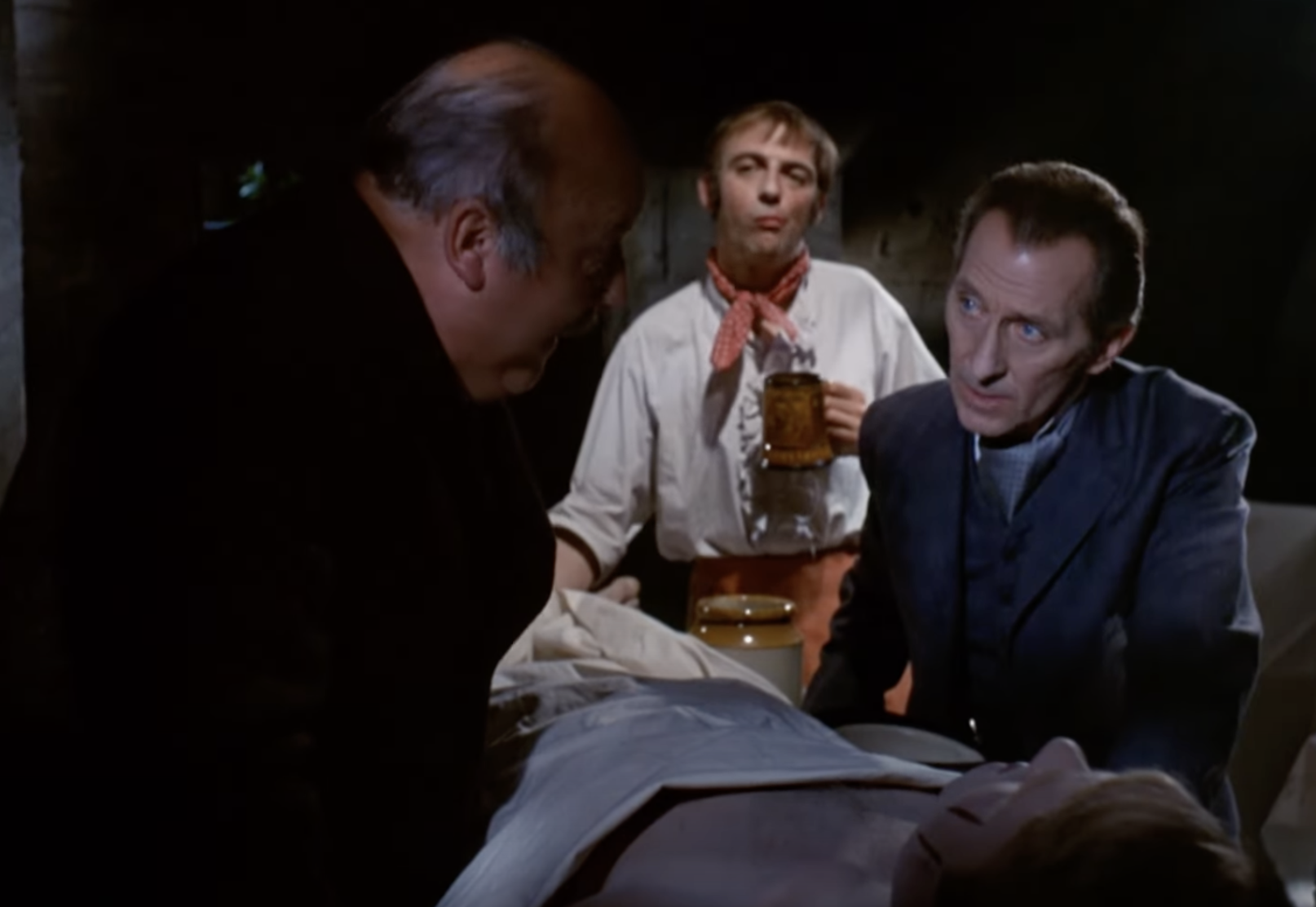
The two movies are a good match in that they both explore women’s roles in horror and particularly females as independent entities, though Christina is a much more interesting and complicated figure than Clare, and is treated more sympathetically by the writers. Peter Cushing shows the subtlety of his acting ability, in that both Frankenstein and Quennell are severe, obsessive men on a mission, but one is a cold, cruel psychopath while the other genuinely cares for the people under his protection. Overall, I’d recommend Frankenstein Created Woman to people who like a good, thought-provoking psychological horror, but The Blood Beast Terror is mostly of interest to Cushing completists.

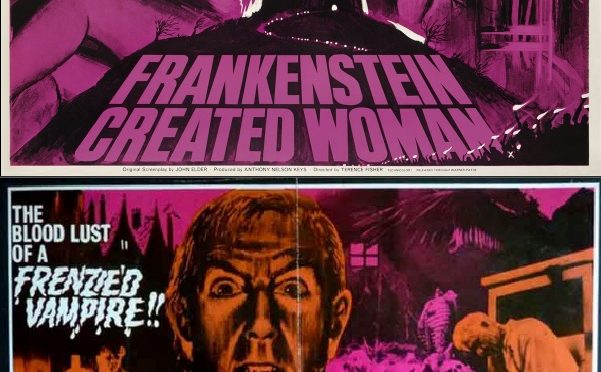

Frankenstein created amity.
I saw both of these and largely agree with your thoughts here, much more cogently put than I could. I think this installment of Frankenstein is my favourite part, particularly a big step up from the last one. Blood Beast Terror feels like there is a good idea trying to get out, but it is such a mess it doesn't really surface.
Excellent reviews.
The Blood Beast Terror hasn't yet made it here to the USA. (From the sounds of it, it seems I'm not missing much.) But Frankenstein Created Woman made it here last year, and it's well worth watching. Almost a Shakespearean tragedy done as a Hammer film.
I could have said a lot more about Frankenstein Created Woman, there's so many good beats, like the whole relationship between Hans and his late father and the way in which Frankenstein slowly corrupts Hertz over the course of the movie. But I was trying to ensure a balanced review, and The Blood Beast Terror, sadly, didn't deliver that kind of quality.